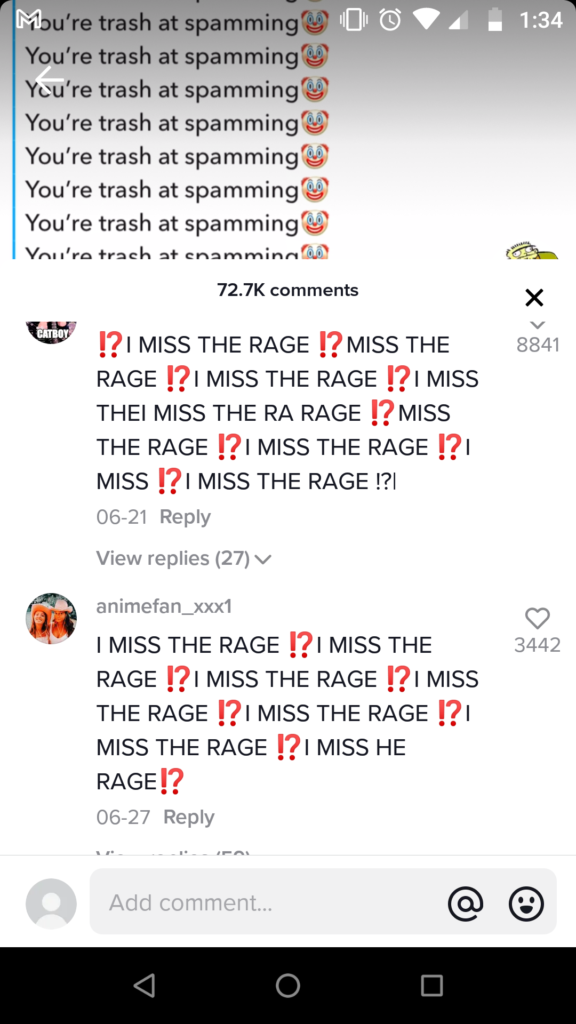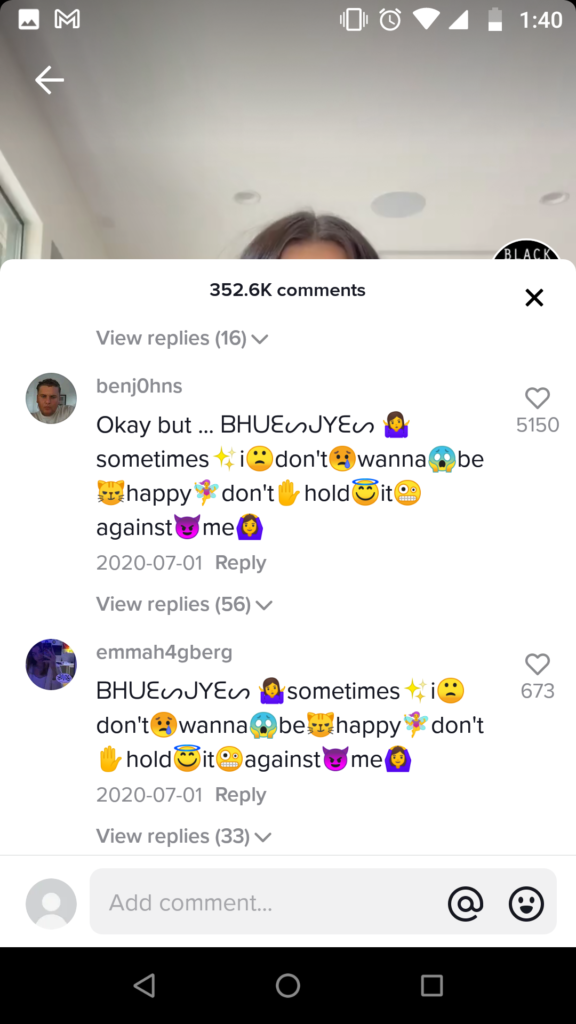You’ve likely heard the term before – and for good reason. Fast fashion is bad for the environment, generates a ton of waste and discarded clothing, and more often than not uses sweatshop labor to keep production up and costs down simultaneously. Fast fashion also often rips off clothing from other, more sustainable, smaller brands, and idea theft in the fashion industry is becoming an increasing problem because of it.
Ultimately, well-made clothes don’t need to be replaced very often. Companies want you to replace them (because that’s how they make money). The clothes ‘got old’, so you should want something ‘new’, says advertising, even if there’s nothing wrong with the clothes themselves.
It’s an ugly thing to be a part of, ethically, environmentally, and monetarily. Fast fashion did exist in the past, but not to such extremes, and generally not for singular outfits and bizarre clothing with holes torn in the functional places. This couldn’t have happened without microtrends and the rise of social media.
Fashion Nova, Shein, and ClickBait Fashion
Fast fashion produces strange results. Strappy sandals that go all the way up the shin combined with swimsuits in a similar fashion, pants with holes up and down the entirety of the leg and combined with ruffles, a denim bikini – not all of these are wearable, but they’re very eye catching on the website. ‘Fashion’ and ‘art’ and ‘clickbait’ all overlap with each other now in a way they didn’t used to.
Know that the website doesn’t need clothing to sell. It does not make all of these pieces to sell them; it makes them to make the other pieces that are actually wearable ‘pop’. When a fashion brand wants to unveil something controversial and exciting, the traditional play is to do it on the runway, and then tone it down for the actual line. When you see a model in an absurdly big hat, they don’t actually want to sell that hat, they just want to plant the idea of a big hat. The hat is an exaggeration of what they’re actually selling, a sort of caricature for the intended look. Fashion Nova and Shein have essentially started listing the giant hat alongside the real hats. The results are weird.
Of the pieces that are wearable, they often don’t look as good on ordinary people – or they do, but only with a few other articles of clothing, meaning you’re always wearing one shirt with one set of pants or one pair of shoes to make it work and look good. This ultimately means that you’re not going to wear that item until the other items to go with it are clean and ready to wear, so it’s going to sit in the closet for much longer between wears – and it may be out of trend before you, the wearer, have truly gotten your money’s worth out of it.
Social Media And Cute Stuff
We know that art tends to get consumed and riffed on into unfamiliarity when there’s clout to snatch and money to make. A popular Mitski song about longing was turned into an anthem for strawberry animals, completely missing the point, and Saturn Eating His Son, one of Goya’s final paintings before he died (and a painting he did on the wall of his house, meaning he probably didn’t intend for anyone to actually see and document it before he passed) is sold on mugs and masks. Clothing, unfortunately, gets this treatment worse than most.
See the strawberry dress by designer Lirika Matoshi. A 300$ dress (which sometimes arrived with broken zippers and hanging threads, but that’s another issue) got passed around social media alongside remixes of that Mitski song. Some people bought it, some tried to recreate it for cheaper, and the strawberry dress held TikTok’s attention for long enough that it started appearing in anime fanart. That’s pretty rare! Marketing-wise, this was bizarre but ultimately welcomed. People had Pavloved others into liking this dress because it was awfully cute and fairly easy to draw, and everyone else was into it. Make art with it, that art will get likes. Cute Stuff Trends.
A specific item was in the spotlight – not the designer, not the line, just this one item from her, and then when it faded it was barely seen again except for in the art that recirculates every now and again.
This is the essence of a microtrend.
MicroTrends
Microtrend clothing is identifiable by a few different factors:
1) It’s cute and unique – but not so unique it’s shocking
2) It’s reasonably accessible
3) It’s very easy to photograph on almost anyone
4) It has no substitute or ‘dupe’ – only one item will do
5) it comes and goes before outsiders realize it’s ‘in’
Here are the differences between ‘trending items’ and ‘microtrends’. I would classify the brief flash of half-open Hawaiian shirts on picture platforms like Pinterest, TikTok, and Tumblr as a trend, not a microtrend. If all of these pictures were of the same shirt, a shirt conveniently available at Target, or Amazon, then it would have been a microtrend. Even then, the only point it misses is 4 – if everyone had been seeking out a specific shirt to take pictures in, it would have been a bona fide microtrend. The strawberry dress hits all five – by the time people were working out dupes for it, the item was no longer hot.
Microtrends are all of the issues with fast fashion condensed into singular pieces of clothing. A sweater featuring a hillside with cows grazing on it hit the big time after a TikTok creator wore it for a video. The strawberry dress spawned strawberry button-up shirts that had an even shorter lifespan. Once it’s no longer hot for pictures, and all the buyer bought it for was the pictures, what happens to it? Having it was the trend, and now the trend is over.
Small businesses try their best to keep up with microtrends and make something fashionable that could also be ‘viral’, which is a tip taken from fast fashion’s vice grip on social media. I don’t blame small creators for it, because they often do their best to keep things clean and ethical in their production (not all do, but many try). I do blame the big companies who are trying to spark viral want for specific items.
Wanting Clothing? Or Wanting What the Clothing Represents?
Chasing fashion has always been exhausting, but now it’s even worse because other people are expecting their favorite style influencers to have an item and showcase it, but not too late and not in a way that’s obviously ethically questionable.
While clothes are often props for influencers, microtrends and fast fashion items bring it to the extreme. Clothing items are expected to set a scene – that strawberry dress was always out and about, people were twirling in it and frolicking in grass fields. It was a prop for influencers, something especially appealing in color and composition for photos. It wasn’t a very practical item to just… wear. You don’t exist in a 300$ dress, you wear it, take pictures, and then hang it back up.
The same went for the half-open Hawaiian shirts – while the style was very flattering, it could also turn very revealing if the wearer wore it out and about the wrong way. Just like the stuff on those fast fashion sites, it looked good in photos, but the reality of wearing a shirt like that is that you don’t, you wear it a few more buttons done up, not the way the model or the influencers have it on.
The dress, the shirt, the sweater does not exist outside of the scene. These things were being sold by the scene, the same way advertisements try and sell you a lifestyle. The thing this time around is that the influencers had tricked themselves into the marketing for the item instead of waiting to be sponsored for it, because it was so appealing as a prop.
The dress was a symbol of whimsy, bright pink and red and not casual at all. These weird Fashion Nova items are in the same camp – it’s whimsy, flirty, and not casual at all. It’s total unwearable-ness is only a problem when you consider what these microtrends are outside of the internet.
Digital Clothing
While some see it as the next logical slip into NFT territory and a slow descent into The Emperor’s New Clothes digitally, others are excited by the possibility. Nobody owns the idea, after all, so if you can design your own digital clothing, you can wear it.
Many aspects of fashion are so fashionable and exciting because it involved someone hand-beading 70,000 Swarovski crystals onto a gown. The excess is what makes the runway. While younger folks with experience in digital art understand how difficult it is to sculpt beads in a program like Blender (or something more proprietary) the old guard often sees digital art as ‘art the computer made’, not ‘art someone made with a computer’. Still, digital clothing prevents people from buying things made with sweatshop labor, and it’s flexibility means that influencers don’t have to be under size ten to wear trendy, untailored items, so it does have a lot of appeal.
The appearance often also leaves something to be desired. DressX, the latest platform to try their hand at digital art, offers one-time-use Photoshopping of clothes onto pictures you submit to them. The effects are anywhere from ‘completely believable’ to ‘obviously edited in’. See Youtuber Safiya Nygaard, a Youtuber who tried the service. The first few days of wearing tame clothing with pretty designs went really well… and then she bought a hat to wear, and the hat was so poorly executed that her fans realized some of the previous items were also digital. Imagine buying an item that looks so bad that people who see your pics of it begin to question the reality of other stuff you wore – that’s not what an influencer wants!
Another major downside is that the clothes still cost quite a lot of money for being single-picture-use items. On DressX ( as of right now, September of 2021), you only get one picture for your purchase. If you want more pictures, you have to pay for them separately. Discovering that you don’t like the pose you struck for the outfit is going to cost money. While trendy and neat, spending 60$ every time you want to show off another angle of an item is… not as economical as just buying it, and so this only solves the ethical issues with fast fashion and microtrends for the influencers who can afford to go digital. Any innovation has hard spots, however, so only time will tell if this becomes more accessible and better-looking.
Sources: https://www.thelist.com/418037/what-is-a-micro-trend-and-how-can-it-affect-fashion-sustainability/



